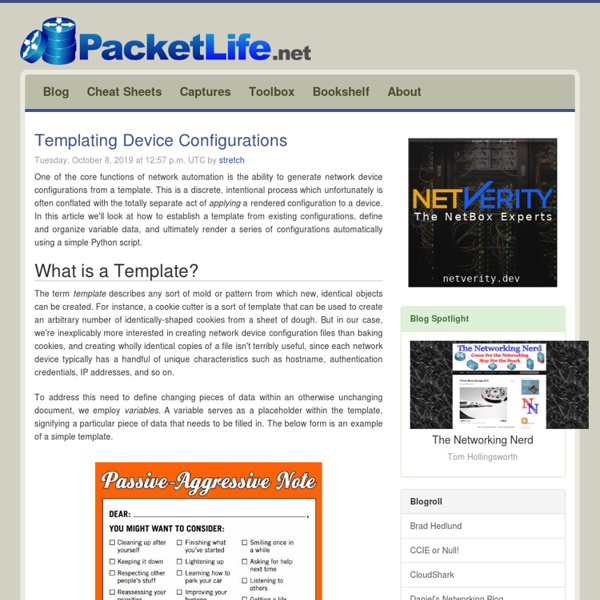



Basic Guide to Frame Relay Networking - Chapter One In this chapter, we will introduce you to frame relay and how it works. In other words, we'll give you the basic gear you'll need to continue your exploration. Basic Trail : Go! The Basic Trail will give you a definition of frame relay as a technology. Then, we'll explore the networking trends that combined to create a market need for frame relay. Advanced Trail : Go! View Points : Figure 1: Frame relay network Go Figure 2: Opens Systems Interconnection (OSI) Model Go Table 1: Comparison chart of TDM circuit switching, X.25, and frame relay Go Shortcut : Go! What is Frame Relay? Simply put, frame relay is a way of sending information over a wide area network (WAN) that divides the information into frames or packets. Frame relay employs a simple form of packet switching that is well-suited to powerful PCs, workstations and servers that operate with intelligent protocols, such as SNA and TCP/IP. Why was Frame Relay Developed?
Daily Bits - Your Daily Dose of Web and Technology Everything you need to know about IPv6 Once upon a time... When the ARPANET was designed in the late 1960s, it was outfitted with a Network Control Protocol (NCP) that made it possible for the very different types of hosts connected to the network to talk with each other. However, it soon became clear that NCP was limiting in some ways, so work started on something better. The engineers decided that it made sense to split the monolithic NCP protocol into two parts: an Internet Protocol that allows packets to be routed between the different networks connected to the ARPANET, and a Transport Control Protocol that takes a data stream, splits it into segments and transmits the segments using the Internet Protocol. TCP/IP has served us well since it was born in 1981, but for some time now it has been clear that the IP part has a limitation that makes continued growth of the Internet for decades to come problematic. This is usually when someone brings up NAT. "Use NAT, n00b. So what about NAT? IPv4 address ranges
eEx NetLab eEx NetLab - What's that? NetLab is a tool which enables the compilation of several network functions via point & click on a graphical user interface. The UI enables the user to drag and drop several components like routers, network interface cards, network maps and much more from the toolbox to NetLab's workspace. There, the components can be configured and connected together. Even complex functions can be arranged and understood this way very easily, because all network traffic flowing through the NetLab is visualized and can be logged. The NetLab also features a rich API on which own applications can be build. The NetLab, together with eEx Network Symphony, earned an Award of Distinction at PRIX ARS Electronica in the category u19 - Freestyle Computing in 2010.
FrontPage - The Wireshark Wiki